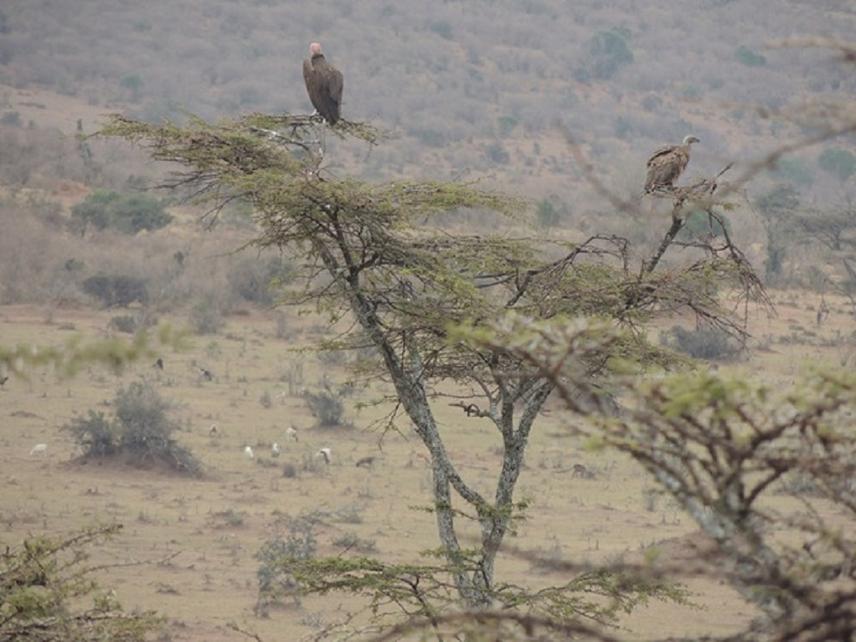Robert Modest
The White-backed Vulture is a scavenger bird native to Sub-Saharan Africa. The species population is currently declining rapidly due to hunting, persecution and poisoning. Looking at the trend of its population decline, the species might be driven to extinction in the very near future if there is no intervention. This project therefore aims at determining the population status of the species and engaging local community members in conserving the species within Eastern Serengeti Ecosystem, Tanzania ― an ecosystem with food security for the species due to high concentration of ungulates.

During transect survey, the White-backed Vulture (right) and the Lapped-faced Vulture (left) were found scanning the landscape from the top of a large acacia tree near Klein's Camp in the Ololosokwan village.
The overall objective of the project is to evaluate the population status of the White-backed Vulture in Eastern Serengeti Ecosystem, and to engage community members in the conservation of the species and its habitat through:
(i) determining the numbers, distribution and key habitat of the species in the area;
(ii) examining attitudes of local people and tourists on the conservation of the species in the area;
(iii) carrying out awareness-raising campaign to inform at least 45 % of local community members in Eastern Serengeti on the threats facing the species.
In Southern Africa and Nigeria, White-backed Vulture population has declined to undesirable levels due to high demand of the species for human consumption and alleged medicinal and psychological benefits. Existence of such phenomena in Eastern Serengeti Ecosystem will as well be examined especially under objective two. By achieving these objectives, knowledge on current population status of the species and its habitat will be amassed. Local community members will also become aware on the urgent need of teaming-up with conservationists to save the species from the edge of extinction. Since the population of White-backed Vulture has declined abruptly over a short period of time, decision makers, and even some conservationists who are responsible in the management of wildlife in Tanzania might not be aware of the current status of the species. Therefore, the information the project is going to generate will be of significance as far as the sustainable conservation of the species and its habitat is concerned.
Additionally, Eastern Serengeti Ecosystem is an important nesting refuge for the White-backed Vulture. Therefore, data on peoples’ attitude towards the species, and its ecology to be gathered will be useful to Ngorongoro Conservation Area, and Serengeti National Park managements, especially in their community outreach programs. When informed on the status of the bird, the two authorities will obviously act quickly to intervene in the neighboring villages to save the species.